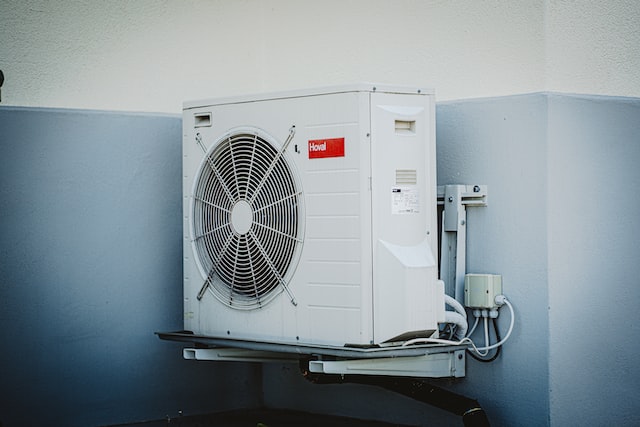
How a Modern Cooling System is Making a Difference
The impact of cooling on the environment is a growing concern in our modern society. While cooling technologies are crucial to keeping us comfortable and maintaining critical infrastructure, they also contribute significantly to global CO2 emissions. The World Green Building Council estimates that the cooling, heating, and lighting of buildings alone are responsible for nearly a third of global emissions. In Singapore, buildings account for more than 20% of carbon emissions. Addressing the environmental impact of cooling is an urgent challenge that requires innovative solutions and a concerted effort from individuals, businesses and governments alike.
The effort to reduce carbon footprint is gaining momentum, with countries around the world setting ambitious targets for carbon reduction. Singapore has made significant progress in greening its buildings, while Malaysia and India have both set long-term goals for carbon neutrality. These initiatives demonstrate a growing recognition of the need to prioritize sustainability and reduce our impact on the environment. It is important that countries continue to work together towards a more sustainable future.
The rapid growth of our global population, coupled with increasing urbanization, means that we will require more cooling solutions than ever before. Unfortunately, this demand will have a significant impact on our environment, particularly if we continue to rely on unsustainable cooling technologies. To mitigate the impact of a cooling system, building owners must prioritize smart and sustainable solutions that prioritize energy efficiency and minimize carbon emissions.
Concerns with conventional cooling systems
The complex and costly nature of traditional cooling systems has become a growing concern for building owners. The process of purchasing and installing equipment can be time-consuming and expensive, with ongoing maintenance costs adding to the burden. Additionally, as systems age, they can become less efficient, resulting in higher energy consumption and costs. These challenges highlight the need for more innovative and sustainable cooling solutions.
The fragmented nature of traditional cooling models has made it difficult for building owners to prioritize sustainability and efficiency. With various suppliers and operators involved, there is no single entity responsible for the cooling system’s performance as a whole. Additionally, measures to improve energy efficiency are often seen as costly and low priority. That is why more streamlined and sustainable cooling solutions that prioritize both cost-effectiveness and environmental concerns are a must.
Going Cooling as a Service to drive sustainability
The Cooling as a Service (CaaS) model is a promising way to implement sustainable cooling solutions in buildings. By subscribing to air-conditioning as a service, building owners can reduce their environmental impact while also reducing operational costs. This approach allows for more efficient and cleaner technologies to be used while also encouraging CaaS providers to prioritize sustainability in their offerings. As such, there is a growing interest in the CaaS model as a way to support more sustainable and cost-effective cooling solutions in buildings.
One of the key advantages of the Cooling as a Service model is that building owners can buy cooling at a fixed $/RTH (Refrigerant Ton Hour) rate on a pay-as-you-use basis. This pricing model allows building owners to better manage their cooling costs and only pay for the cooling they actually use. Additionally, this approach can incentivize service providers to prioritize efficiency and sustainability, as they are directly responsible for the cost of cooling.
With Cooling as a Service, the focus is on maximizing the efficiency of cooling systems through the use of advanced technology such as big data, analytics, and AI. This approach allows service providers to monitor and control the system in real-time, optimizing its performance and reducing energy waste. Ultimately, this results in a better indoor experience for building occupants while also reducing the environmental impact of cooling systems.
Elpro Business Park & Elpro City Square in Pune, India, has taken a significant step towards sustainable cooling by implementing the CaaS model. The mixed-use development uses an AI-powered chiller plant that runs on 100% solar energy, providing clean and eco-friendly cooling to its various spaces. The CaaS model has allowed for real-time data tracking and analysis, resulting in optimal use of resources and efficient performance. This system is an example of how businesses can prioritise sustainability while providing the necessary cooling for their operations.
The CaaS model can help to create more sustainable buildings, as seen in the case of the INSEAD Asia campus in Singapore. The water-cooled chilled water system, powered by the CaaS model, has enabled the campus to achieve the highest level of green building certification from the BCA. The system has also achieved energy savings of 4.8%, demonstrating the benefits of this model in reducing the carbon footprint of buildings. By implementing sustainable cooling solutions like the CaaS model, building owners can achieve both environmental and economic benefits, especially for a data center cooling system.
In summary
The demand for cooling is on the rise globally, with projections indicating that it will account for up to 30% of ASEAN’s peak electricity demand by 2040. This poses a significant challenge for policymakers and energy providers, who must balance the need for cooling with the need to reduce greenhouse gas emissions. Implementing clean and efficient cooling technologies is critical to avoiding a climate catastrophe and avoiding a surge in electricity demand. By prioritizing sustainable cooling solutions, we can reduce the strain on energy systems, improve energy efficiency, and mitigate the impact of cooling on the environment. This requires collaboration across sectors and the deployment of innovative technologies to transform the way we approach cooling.
Cooling as a Service (CaaS) has the potential to transform the way we approach cooling and its impact on the environment. By providing access to clean and advanced cooling solutions, CaaS promises to benefit people, businesses, and the world at large in a sustainable manner. This innovative approach to cooling delivery is set to revolutionize the industry, offering a more efficient and environmentally friendly alternative to traditional cooling solutions. As the demand for cooling continues to grow, the adoption of CaaS can play a significant role in reducing carbon emissions, improving energy efficiency, and enhancing our quality of life.







